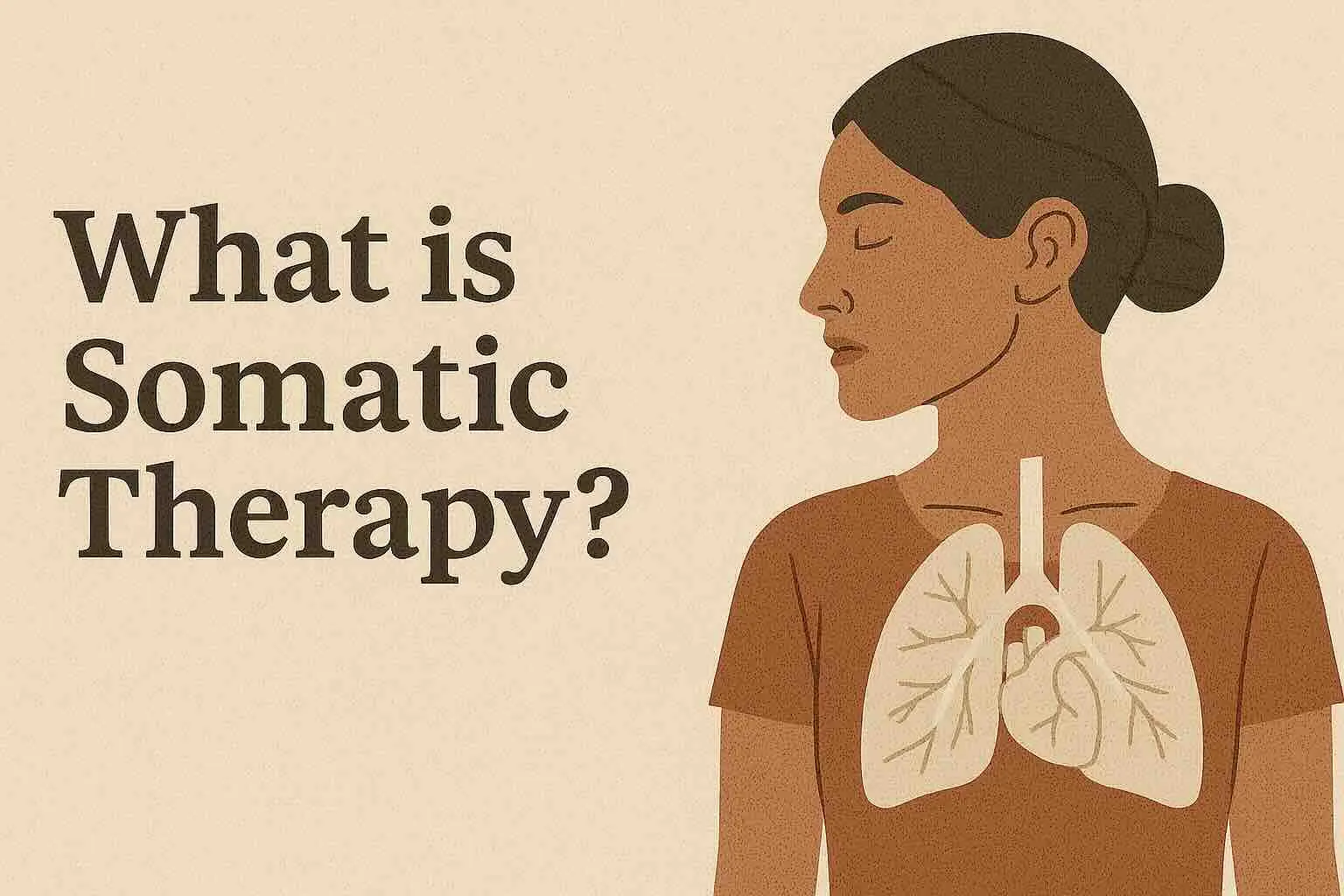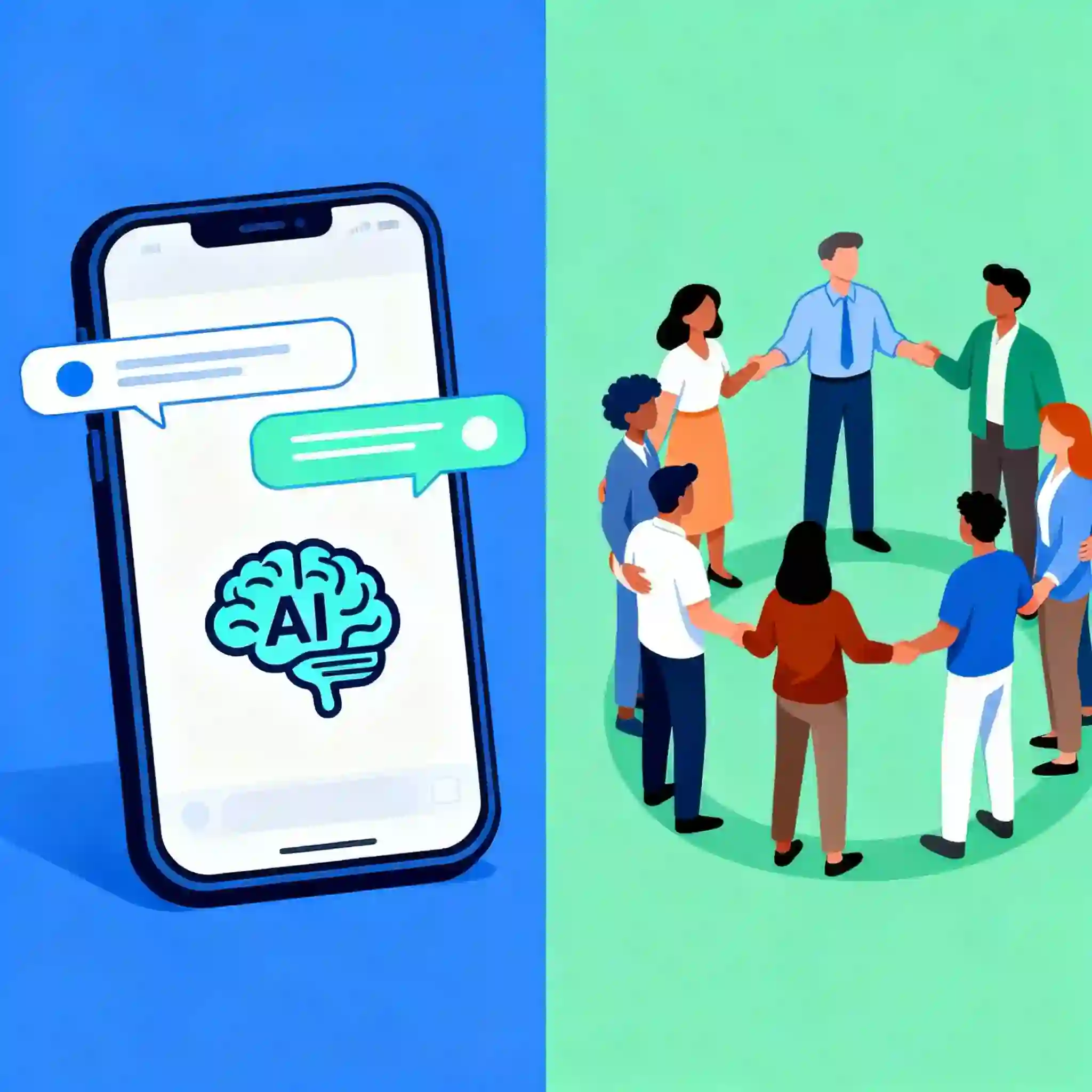TL;DR
Somatic Therapy integrates body-centered techniques—body scanning, breathwork, grounding exercises, and movement awareness—to process trauma and chronic stress stored in the body. Research shows moderate effect sizes (d ≈ 0.65) for PTSD and anxiety reduction. Noah AI guides clients virtually through structured somatic exercises, daily body checks, and mindful movement prompts via chat and call.
Somatic Therapy recognizes that emotional experiences—especially trauma—are held not only in the mind but through the body’s physiology. By cultivating body awareness and safe movement, clients learn to release tension patterns, regulate the nervous system, and integrate mind-body healing.
Core Principles of Somatic Therapy
- Body-Mind Connection: Emotional states manifest as physiological patterns (muscle tension, breath changes, posture shifts).
- Polyvagal Theory: Understanding autonomic nervous system responses—fight/flight, freeze, and social engagement—guides regulation techniques.
- Interoception: Developing sensitivity to internal bodily sensations to track emotional shifts.
- Resourcing and Safety: Establishing internal and external resources before processing trauma.
- Pendulation: Alternating between activation (body sensations, emotions) and relaxation to build tolerance.
- Titration: Gradually engaging with trauma-related sensations in manageable doses to prevent overwhelm.
Key Somatic Techniques
1. Body Scanning
- Progressive Attention: Systematically noticing sensations in each body region.
- Tension Release: Clients identify tightness, then use breath or gentle movement to ease areas of stress.
2. Breathwork
- Diaphragmatic Breathing: Slow, deep breaths to engage the vagus nerve and promote relaxation.
- Coherent Breathing: Equal-length inhale and exhale cycles (e.g., 5 seconds each) to stabilize heart rate variability.
3. Grounding Exercises
- 5-4-3-2-1 Technique: Noticing 5 physical sensations, 4 sounds, 3 smells, 2 tastes, 1 visual detail to anchor in the present.
- Sensory Anchors: Holding a textured object or placing feet firmly on the ground to feel secure.
4. Movement Awareness
- Gentle Stretching: Slow, mindful movements to release muscle holding patterns.
- Pendulation Exercises: Alternating between contracting and releasing muscle groups to track activation and recovery.
- Yoga-Based Poses: Simple postures (e.g., child’s pose, cat–cow) to integrate breath and movement.
5. Resourcing
- Internal Resources: Recalling memory of safety or warmth (e.g., imagining a supportive figure).
- External Resources: Noting supportive people, places, or objects present in real-time.
How Somatic Therapy Works
- Safety Assessment: Noah AI ensures clients have resources and support before engaging somatic work.
- Guided Awareness: Through chat or call, AI leads clients into body scanning, breathwork, or grounding.
- Titration and Pendulation: Sessions balance activation of sensations with return to calm, avoiding overwhelm.
- Integration and Reflection: AI prompts clients to describe shifts in sensations and emotional states.
- Homework Practice: Daily somatic exercises tracked via the app, with reminders and encouragement.
Evidence of Effectiveness
- PTSD and Trauma: Meta-analyses report moderate effect sizes (d ≈ 0.65) for reduction in trauma symptoms and hyperarousal.
- Anxiety Disorders: Somatic interventions yield significant decreases in generalized anxiety and panic symptoms.
- Chronic Pain: Body awareness techniques improve pain tolerance and reduce muscle tension.
- Stress Reduction: Breathwork and grounding consistently lower cortisol and improve heart rate variability.
Who Benefits Most
- Trauma Survivors: Individuals coping with PTSD, complex trauma, or dissociation.
- Chronic Stress and Burnout: Professionals and caregivers experiencing high tension.
- Somatic Symptoms: Clients with psychosomatic conditions (e.g., IBS, fibromyalgia).
- Emotional Dysregulation: Those struggling to connect body sensations to emotions.
- Yoga and Mindfulness Practitioners: Individuals seeking deeper integration of mind and body.
Noah AI’s Role in Somatic Therapy
Noah AI delivers Somatic Therapy tools virtually:
- Structured Exercise Guides: Step-by-step chat scripts for body scans, breathwork, and movement.
- Real-Time Prompts: AI listens to client reports and adjusts pacing and technique suggestions.
- Daily Reminders: Encourages consistent practice through scheduled notifications.
- Progress Tracking: Logs sessions, subjective tension levels, and highlights improvements.
- Safety Checks: Verifies clients remain within their window of tolerance and offers grounding as needed.
Frequently Asked Questions
Can somatic therapy be effective without in-person touch?
Yes. Techniques focusing on interoception, breath, and movement translate effectively through guided audio or chat instruction.
How long before I notice changes?
Many clients report immediate relaxation from breathwork; deeper integration and symptom relief often begin within 4–6 weeks of regular practice.
What if I feel overwhelmed by sensations?
Noah AI’s titration and pendulation approach ensures exposure to sensations remains within manageable limits, with grounding prompts available.
Conclusion
Somatic Therapy unlocks healing potential by bridging mind and body through awareness, breath, and movement. Supported by Noah AI’s virtual guidance—body scans, breathwork, grounding, and gentle movement—clients can safely process trauma, reduce anxiety, and cultivate lasting resilience. Embrace the wisdom of your body to foster holistic well-being and reclaim freedom from chronic tension.
Ready to explore Somatic Therapy? Discover how Noah AI’s virtual somatic exercises can guide you toward embodied healing and integrated balance—because true wellness begins with mindful presence in your own body.
Download the Noah AI app for iPhone and Android today.
References
- “Body-Centered Psychotherapy for Post-Traumatic Stress Disorder: A Meta-Analysis” – Journal of Traumatic Stress
https://doi.org/10.1002/jts.22589 - “Somatic Experiencing® for Anxiety and Depression: Systematic Review and Meta-Analysis” – Journal of Clinical Psychology
https://doi.org/10.1002/jclp.23159 - “Breathwork Interventions for Stress Reduction: A Meta-Analysis” – Frontiers in Psychology
https://www.frontiersin.org/articles/10.3389/fpsyg.2024.01475/full - “Interoceptive Awareness and Chronic Pain: Randomized Controlled Trial” – Pain Medicine
https://doi.org/10.1093/pm/pnz345 - “Polyvagal Theory in Somatic Therapy: A Review” – Psychotherapy Research
https://doi.org/10.1080/10503307.2025.00214







